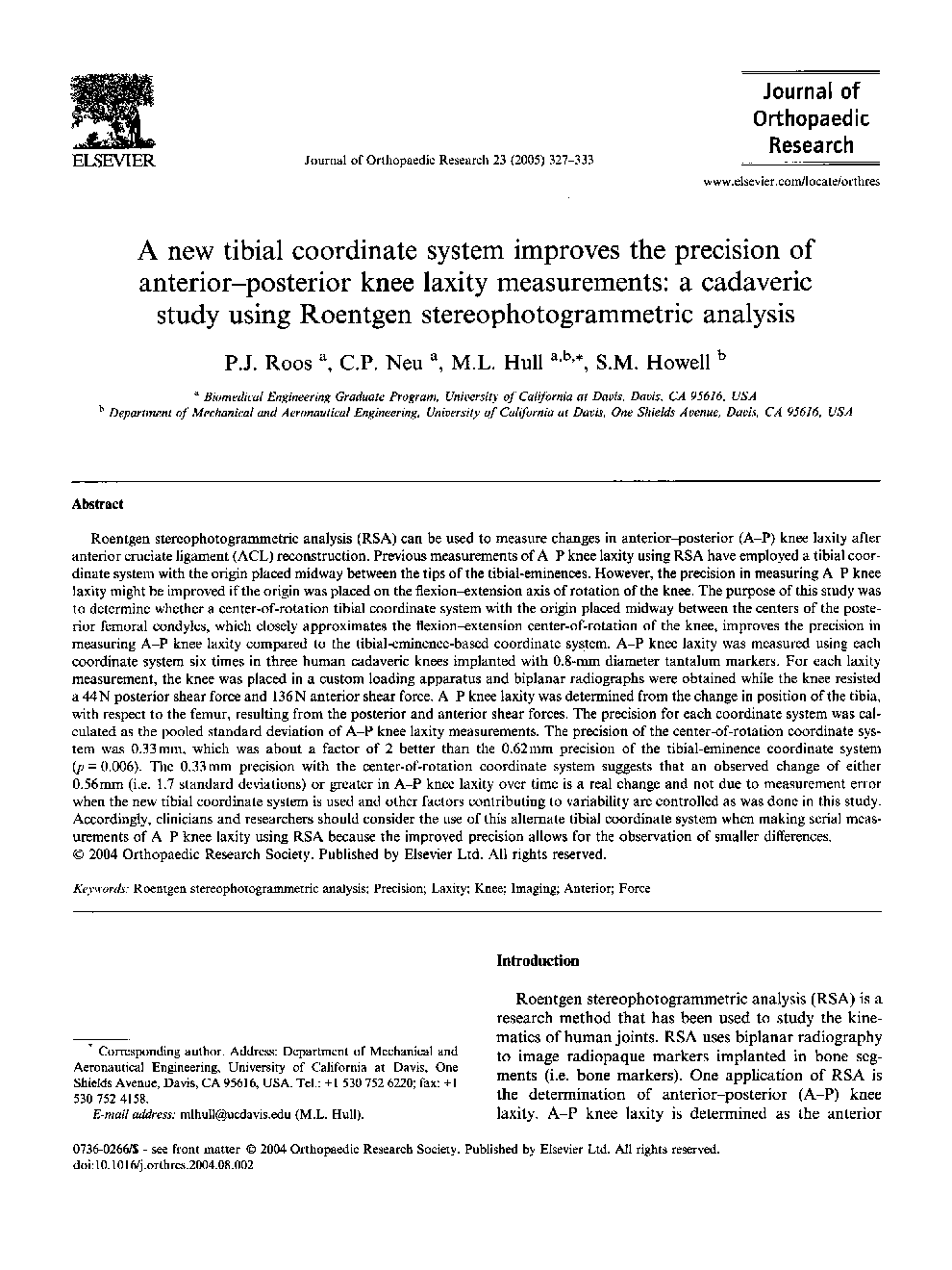| Article ID | Journal | Published Year | Pages | File Type |
|---|---|---|---|---|
| 9354065 | Journal of Orthopaedic Research | 2005 | 7 Pages |
Abstract
Roentgen stereophotogrammetric analysis (RSA) can be used to measure changes in anterior-posterior (A-P) knee laxity after anterior cruciate ligament (ACL) reconstruction. Previous measurements of A-P knee laxity using RSA have employed a tibial coordinate system with the origin placed midway between the tips of the tibial-eminences. However, the precision in measuring A-P knee laxity might be improved if the origin was placed on the flexion-extension axis of rotation of the knee. The purpose of this study was to determine whether a center-of-rotation tibial coordinate system with the origin placed midway between the centers of the posterior femoral condyles, which closely approximates the flexion-extension center-of-rotation of the knee, improves the precision in measuring A-P knee laxity compared to the tibial-eminence-based coordinate system. A-P knee laxity was measured using each coordinate system six times in three human cadaveric knees implanted with 0.8-mm diameter tantalum markers. For each laxity measurement, the knee was placed in a custom loading apparatus and biplanar radiographs were obtained while the knee resisted a 44 N posterior shear force and 136 N anterior shear force. A-P knee laxity was determined from the change in position of the tibia, with respect to the femur, resulting from the posterior and anterior shear forces. The precision for each coordinate system was calculated as the pooled standard deviation of A-P knee laxity measurements. The precision of the center-of-rotation coordinate system was 0.33 mm, which was about a factor of 2 better than the 0.62 mm precision of the tibial-eminence coordinate system (p = 0.006). The 0.33 mm precision with the center-of-rotation coordinate system suggests that an observed change of either 0.56 mm (i.e. 1.7 standard deviations) or greater in A-P knee laxity over time is a real change and not due to measurement error when the new tibial coordinate system is used and other factors contributing to variability are controlled as was done in this study. Accordingly, clinicians and researchers should consider the use of this alternate tibial coordinate system when making serial measurements of A-P knee laxity using RSA because the improved precision allows for the observation of smaller differences.
Related Topics
Health Sciences
Medicine and Dentistry
Orthopedics, Sports Medicine and Rehabilitation
Authors
P.J. Roos, C.P. Neu, M.L. Hull, S.M. Howell,
